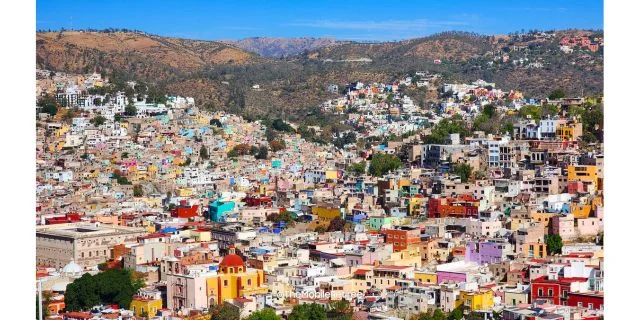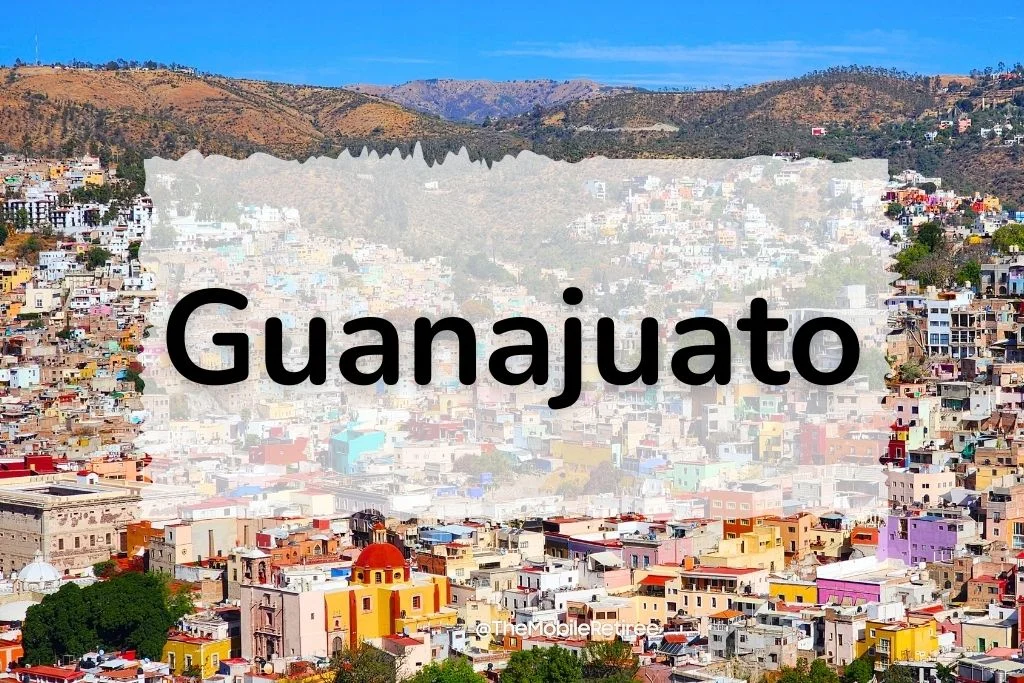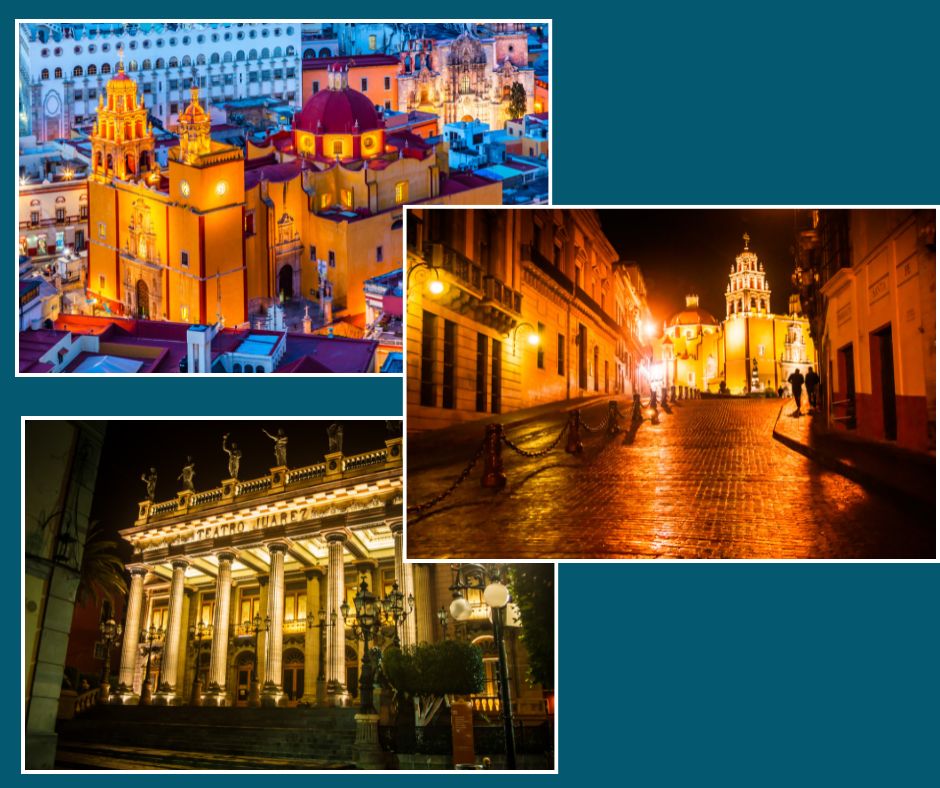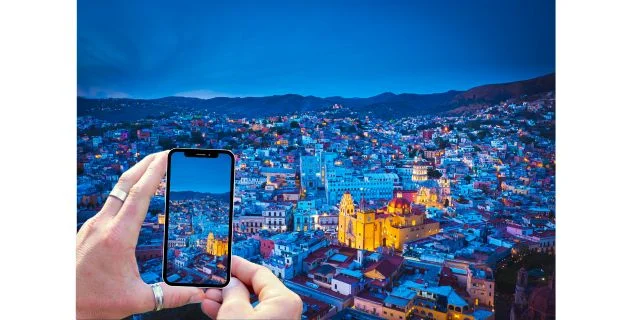Mexico City Travel Guide
We wrote this Mexico City Travel guide to help you explore Mexico City with confidence and curiosity.
Thinking about visiting Mexico City but unsure where to start? As full-time travelers living abroad on a budget, we explored CDMX deeply—by foot, bike, bus, and taco stand. From world-class museums and hidden markets to must-know transit tips, we’ve pulled together everything we wish we’d known before our trip—along with trusted booking resources and tools we personally use. Whether you’re staying for a weekend or settling in for a month, this Mexico City Travel guide will help you explore Mexico City with confidence and curiosity.
Quick Links

PLAN YOUR TRIP WITH OUR FAVORITE RESOURCES
Best accommodation site: Expedia
Flight Deals: DailyDrop
Book Guided Tours: GetYouGuide
Where to Stay in Mexico City
For a centrally located and vibrant experience, staying in Roma Norte or Condesa is highly recommended. These neighborhoods offer a mix of trendy restaurants, bars, art galleries, and parks, making them ideal for exploring the city. For a more luxurious experience, consider Polanco, known for its upscale dining, designer shopping, and high-end hotels. If you prefer a more traditional, historic vibe, the historic center is a great option, with access to major attractions and a unique cultural atmosphere.
Best Hotels
Mexico City Neighborhoods To Visit
Itineraries For Mexico City
Blogs Posts from our visit to Mexico City
Best Time to Visit
Mexico City is a good year-round destination. Other than late April / early May, it never gets really hot and things always cool down later. Weather is never too cold – a sweater will suffice even on the worst morning in January as it will warm later. There is always something going on.
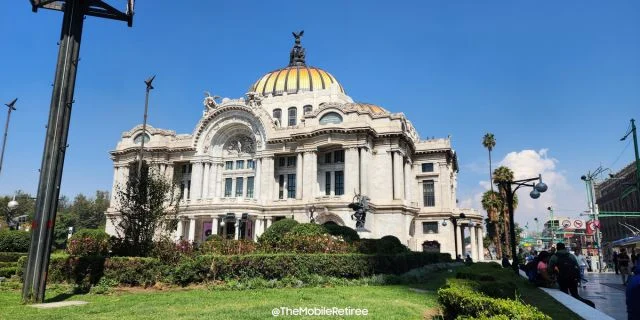
Best Things to Do
Authentic Experiences & Hidden Gems
Must-See Attractions
Day Trips From Mexico City
Best Shopping
- Best for: Designer fashion, luxury brands, high-end boutiques
- Where: Avenida Presidente Masaryk (Mexico City’s Rodeo Drive)
- Shops you’ll find: Louis Vuitton, Gucci, Cartier, and upscale Mexican designers like Yakampot
- Bonus: Close to fancy restaurants and art galleries
- Best for: Quirky gifts, crafts, vintage books
- Where: Around Jardín Centenario and the Frida Kahlo Museum
- Shops to visit: Bazaar Artesanal Mexicano, Fonart, and weekend pop-up stalls
- Bonus: Great spot for souvenirs with soul
- Best for: Colorful artisan goods, folk art, textiles, gifts
- Where: Balderas Metro area
- What to buy: Oaxacan embroidery, handwoven baskets, alebrijes (painted wooden creatures), Talavera pottery
- Tip: Prices are better than touristy markets in Coyoacán, and you can haggle
- Best for: Boutique shopping, handmade goods, vintage stores
- Where: Along streets like Colima, Álvaro Obregón, and Amsterdam
- Shops you’ll find: 180º Shop (indie designers), Goodbye Folk (retro shoes), Utilitario Mexicano (design-forward housewares)
- Bonus: Stylish cafes and leafy streets for breaks between browsing
- Best for: Bargain hunting, electronics, shoes, fabric, party supplies
- Where: All around Calle Madero, República de El Salvador, and Correo Mayor
- Vibe: Crowded, fast-paced, and packed with options
- Don’t miss: Pasaje América (underground shops), old-school department stores like El Palacio de Hierro Centro
Where to eat
Getting Around Mexico City
Metro (Subway)
Mexico City’s comprehensive metro system has 195 stations spread across 14 lines; its a cost-effective and convenient way to avoid traffic above ground. For more information on routes, see here.
Metrobús
You can use the same prepaid Metro Card used for the Metro to board any Metrobús line. Metrobús is simple, and it’s very often the fastest way to get from one point to another. There are three main types of buses in Mexico City: Pesero, Metrobus, and Trolebus. Buses run from early morning until late night, after which you’ll need to take a taxi. A complete map of the Metrobus system is available here.
Bike
Though Mexico City doesn’t have a dedicated cycle route, bikes are available to hire for free from a kiosk on the west side of Catedral Metropolitana.
Taxis and rideshare
Taxis in Mexico City are generally inexpensive and easy to flag down on the street—ensure that you only use registered cabs that display a sticker in the front window. Rideshare apps such as Uber are available.
Pro Tip:
- Wear comfortable shoes: You’ll be doing a lot of walking!
- Avoid rush hours: Leave your hotel after 9:15 am and remember that after 5 – 5:30, until around 8:00 pm, traffic gets quite complicated. Especially on Fridays.
A Week in Mexico City Budget Break Down
For a budget-friendly week in Mexico City, plan on spending around $600–$850 USD. This covers accommodation, food, transportation, and some activities. A mid-range budget would be $850–$1,400 USD, allowing for nicer accommodations, more restaurants, and paid attractions.
Here’s a more detailed breakdown:
Budget-Friendly (around $600–$850 USD):
- Accommodation: Hostels or budget hotels can cost $15-$25 per night, or $70-$175/week. Private Airbnb rooms may range from $20-$30 per night.
- Food: Eating street food and at local restaurants can keep your daily food costs around $10-$20, or $70-$140/week.
- Transportation: Metro and buses cost just $0.25–$0.30 per ride. Weekly public transport use adds up to $10–$20. Occasional Uber rides may add $10–$20 more.
- Activities: Many attractions are free or low-cost, and you can explore the city’s parks, plazas, and museums (some are free or charge just a few dollars). Budget $30–$60 for the week.
Mid-Range (around $850–$1,400 USD):
- Accommodation: Mid-range hotels or Airbnb rentals will cost around $50–$100 per night, or $350–$700/week.
- Food: You can enjoy a wider mix of local restaurants and sit-down meals at $20–$30/day, or $140–$210/week.
- Transportation: You can use taxis and Uber more frequently, which adds convenience but increases your transportation budget slightly, so figure $30–$70/week.
- Activities: Add guided tours, boat rides, museum entries, and cultural events. Budget $70–$140/week.
For couples, shared lodging can make the per-person budget even more manageable. But for solo travelers, these ranges are a solid starting point for realistic planning in 2025.
Pro Tip:
- Use ATMs to withdraw cash from local banks for a good exchange rate.
- Explore local markets and street food for affordable and delicious meals.
- Many free activities are available, such as visiting parks, historical sites, and exploring the city’s neighborhoods.
*This is Budget breakdown for a week (7 days) in Mexico City – please adjust for your chosen itinerary
Bonus Tip: Free WiFi!! Mexico City has created a system of more than 31,000 free WiFi hotspots using existing unused bandwidth on security cameras. For international users, this can mean a welcome break from international roaming charges or similar interruptions to connectivity.
Frequently Asked Questions about visiting Mexico City
What are 5 interesting facts about Mexico City?
1. Built on a Lake – Mexico City is built on the ruins of Tenochtitlán, the capital of the Aztec Empire, which was originally located on an island in Lake Texcoco. Because of this, parts of the city are still slowly sinking—some areas by several inches per year.
2. One of the Oldest Continually Inhabited Cities in the Americas – The area has been settled for thousands of years. Tenochtitlán was founded in 1325, and after the Spanish conquest in 1521, it became Mexico City, making it one of the oldest continuously inhabited urban areas in the Western Hemisphere.
3. It Has More Museums Than Almost Any City in the World – With over 150 museums, Mexico City rivals London and Paris in cultural offerings. Highlights include the National Museum of Anthropology, Frida Kahlo Museum, and the Templo Mayor Museum showcasing Aztec ruins.
4. Home to the Largest University in Latin America – The National Autonomous University of Mexico (UNAM) is not only the largest but also one of the oldest universities in the Americas. Its main campus is a UNESCO World Heritage Site, celebrated for its murals and architecture.
5. High Altitude = Cooler Than You’d Expect – Despite being in the tropics, Mexico City sits at about 7,350 feet (2,240 meters) above sea level. This elevation gives it a mild climate year-round, with cooler temperatures than many visitors expect.
Can I brush my teeth with tap water in Mexico City?
Depends? How good is your gut health? Mexico City’s tap water is not recommended for drinking, and most locals prefer to use bottled or filtered water for this purpose. Our hotel had free chilled bottled water available in the lobby so we could always grab a bottle on our way out to sightsee.
Is Mexico City safe?
As with ANY tourist mecca – Be aware of your surroundings!
While many areas are safe, be cautious in secluded or less-familiar areas, especially at night. Keep an eye on your wallet and cell phone at all times, especially at very crowded, touristy places.What’s the weather like in Mexico City?
Winter (Dec, Jan, Feb): Avg High from 72°F to 76°F – Can get chilly in the evening – bring a sweater
Spring (March, April, May): Avg High around 78°F
Summer (June, July, August): Daily highs are from 74°F to 79°F
Fall (Sept, Oct, Nov): Daily high around 73°F
Weatherspark is a great resource for any traveler!What language is spoken in Mexico City
Spanish is the most widely spoken language of Mexico, but it is not legally the official language. The government recognizes 68 other languages spoken in the country. Most hotels and tourism related services offer at least some English.
How much to tip in Mexico City?
The custom is to leave tips of about 10%. This can rise to 15% if the service was exceptional.
What is the timezone?
Central Standard Time (GMT-6)
What are the voltage/plug types?
Mexico’s electricity is essentially the same as that in the United States. Both countries use the same voltage (110-120V) and frequency (60 Hz). There are two associated plug types: Type A (two flat parallel prongs) and Type B (two flat parallel prongs and a grounding prong). Most US-made appliances can be used in Mexico without the need for a converter or transformer.
What is the currency?
Mexican Peso. Its currency code is MXN and its symbol is $. To distinguish it from other currencies using the $ symbol, the peso is sometimes written as M$, MX$, or MEX$
Do I need a visa to visit Mexico
If you’re visiting Mexico City from overseas, see if you need a visa using this website. Your passport must be valid for at least six months after the date of entry.
What are the cheapest months to visit Mexico City?
June through October are the wettest months in Mexico, so if you’re willing to risk these less-than-ideal conditions (particularly in mid-September, the peak of the Mexican hurricane season) your flight and hotel costs should be correspondingly low.
How many days do you need in Mexico City?
To experience a good overview of Mexico City’s highlights, 5 days is generally recommended. Five days allows you time to explore the historic center, major museums, and key neighborhoods like Roma and Condesa. If you’re interested in more in-depth exploration or incorporating day trips, consider extending your stay to a week or even longer
Is Mexico City walkable?
Yes, Mexico City is quite walkable! Though the city is HUGE and sprawling – many areas, particularly in the city center and some residential neighborhoods, are designed with pedestrians in mind.
Will I get altitude sickness in Mexico City?
Mexico City sits at around 7,200 feet (2,200 meters) above sea level, which is high enough for some individuals to experience symptoms, although losst of people visit Mexico City with no symptoms at all. If you’re planning on visiting nearby mountains, you should be sure to spend several days in Mexico City Center before traveling any higher.
How to Get to Mexico City? Air and Land options
What US cities have direct flights to Mexico City?
Which Airport should I use?
Mexico City is served by Benito Juarez International Airport (MEX), best known as Mexico City International airport.
How to get to the center of Mexico City from the Airport?
Mexico City’s Metrobús Line 4 heads into Mexico City’s Historic Center from the airport.
- Passengers can board outside of entrance 7 at Airport Terminal 1 or outside entrance 2 at Terminal 2.
- The cost for the service is $30.00 pesos per passenger, per ride, departing from the Airport.
- Payments need to be made with the Metro Card smart card system. Cards can be purchased, in the airport at machines inside of both Terminal 1 and Terminal 2 boarding areas.
- The bus arrives San Lázaro station where passengers can switch to the Metro or take intercity buses to other cities from the TAPO bus station.
What we learned while in Mexico City
1. It Was Literally Built Over a Sunken Empire: Mexico City is the only capital city in the world built on top of a still-visible ancient capital—Tenochtitlán, the heart of the Aztec empire. You can walk out of a subway station and stumble upon 5th-century ruins, right next to colonial cathedrals and 21st-century office towers.
2. It’s Sinking Faster Than Venice: The city is collapsing under its own weight—some districts are sinking up to 20 inches per year. That’s not just an interesting geological fact—it’s shaping how buildings, water infrastructure, and even public transit are planned.
3. Home to the Largest Urban Park in Latin America: Chapultepec Park is over twice the size of New York’s Central Park and contains a castle, multiple museums, and a zoo. It’s not just a park—it’s a cultural institution.
4. Its Metro Is Dirt Cheap and Icon-Based: The CDMX metro is one of the largest and most affordable systems in the world (roughly 25 cents per ride), and every station has a pictogram, not just a name—so even if you’re illiterate, you can find your stop.
5. A City of Murals, Not Just Museums: Sure, it has over 150 museums—but what makes Mexico City stand out is that art spills into the streets. Think Diego Rivera murals in government buildings, metro stations filled with mosaics, and revolutionary stories painted on public walls.

Support independent travel writers
Love our travel stories? Be part of our journey! Help us brew up more travel tales and support independent content creators like us, Buy Us A Coffee. We’ll give you a shout out in one of our videos! Click the cup to show your support!


